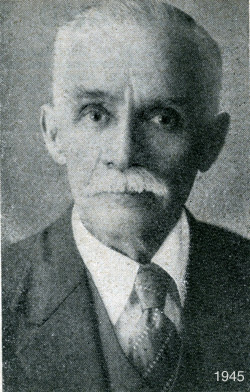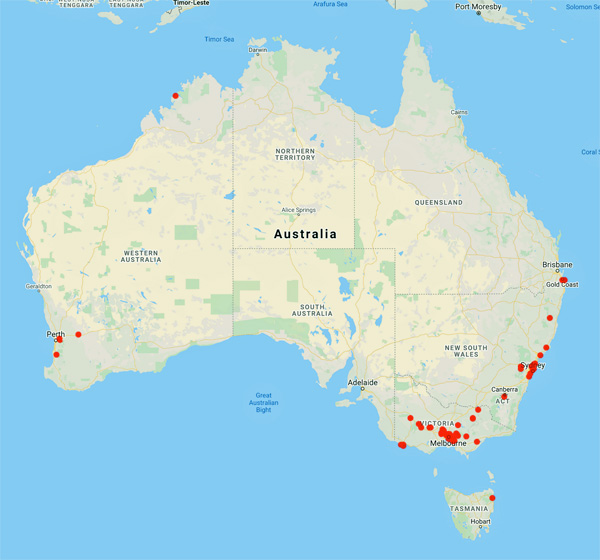
Council of Heads of Australasian Herbaria
Australian National Herbarium
Biographical Notes
 |
Council of Heads of Australasian Herbaria |
 Lyell, George (1866 - 1951)
Lyell, George (1866 - 1951)George Lyell, an Australian of Scottish descent, was born at Ararat,
Victoria, on July 25, 1866. He died in Gisborne, Vic, in 1951.
He had
no special interest in natural history
in his early youth. It was in 1888
that his thoughts first turned seriously to insect collecting when, at
Albert Park, Victoria (a favorite collecting place in those times), he captured his first butterfly, a specimen
of the well-known Caper White, Anaphaeis java teutonia.
He joined the Field Naturalists club shortly after. He became an avid collector of butterflies and moths. He also developed a fascination with Australian orchids, and contributed may specimens to Australian herbaria.
Soon he came up against that
nightmare of all insect collectors, young and
old - how to provide adequate storage room for the collection. For a
while he had to be content with
storeboxes, some good, and some not
so good. He then conceived the idea
of making small insect cabinets of
only six drawers each, and of such a
design that the units could be fitted
together to make a larger cabinet,
on the same principle as a sectional
bookcase, He then aimed at the ob-
jective of increasing his cabinet space
by one of these six-drawer cabinets
every year, and so successful was the
idea, and so thorough the collecting,
that at the time he commenced
transferring his collection to the Museum in 1932 he had more than 300
cabinet drawers filled with Australian butterflies and moths.
The last census of the
Lyell collection, in July, 1938, showed
48,468 specimens, representing 5315
species, all Australian. In this there
were 393 type specimens named by
such world famous authorities as
Turner, Meyrick, Prout and Lower.
The Lyell collection of Australian
butterflies and moths has now been moved from his home in Gisborne, ‘Victoria, to the National
Museum, Melbourne,
completed in 1946, and it is being placed on
public exhibition in the main hall,
one section at a time.
From: 'Lyell Collection of Butterflies and Moths: Gift to Nation' by R. T. M. Pescott, Director National Museum of Victoria
Source: Extracted from: WILD LIFE, May, 1946. Page 170
Portrait Photo: Extracted from: WILD LIFE, May, 1946. Page 170.
Data from 245 specimens
